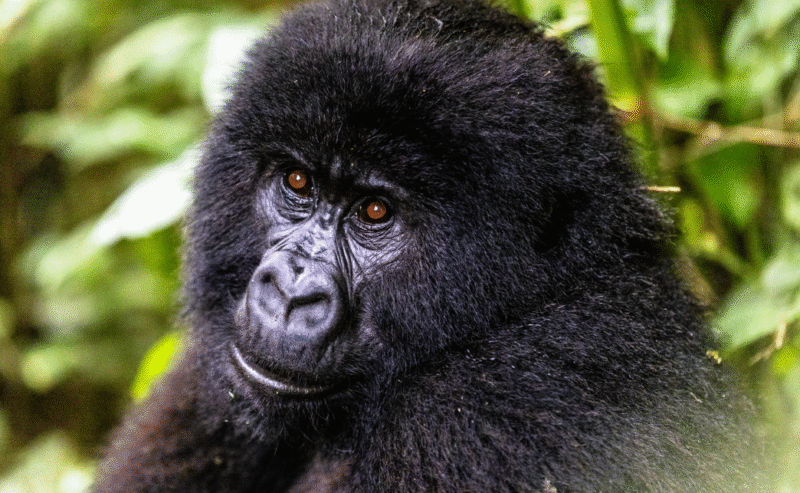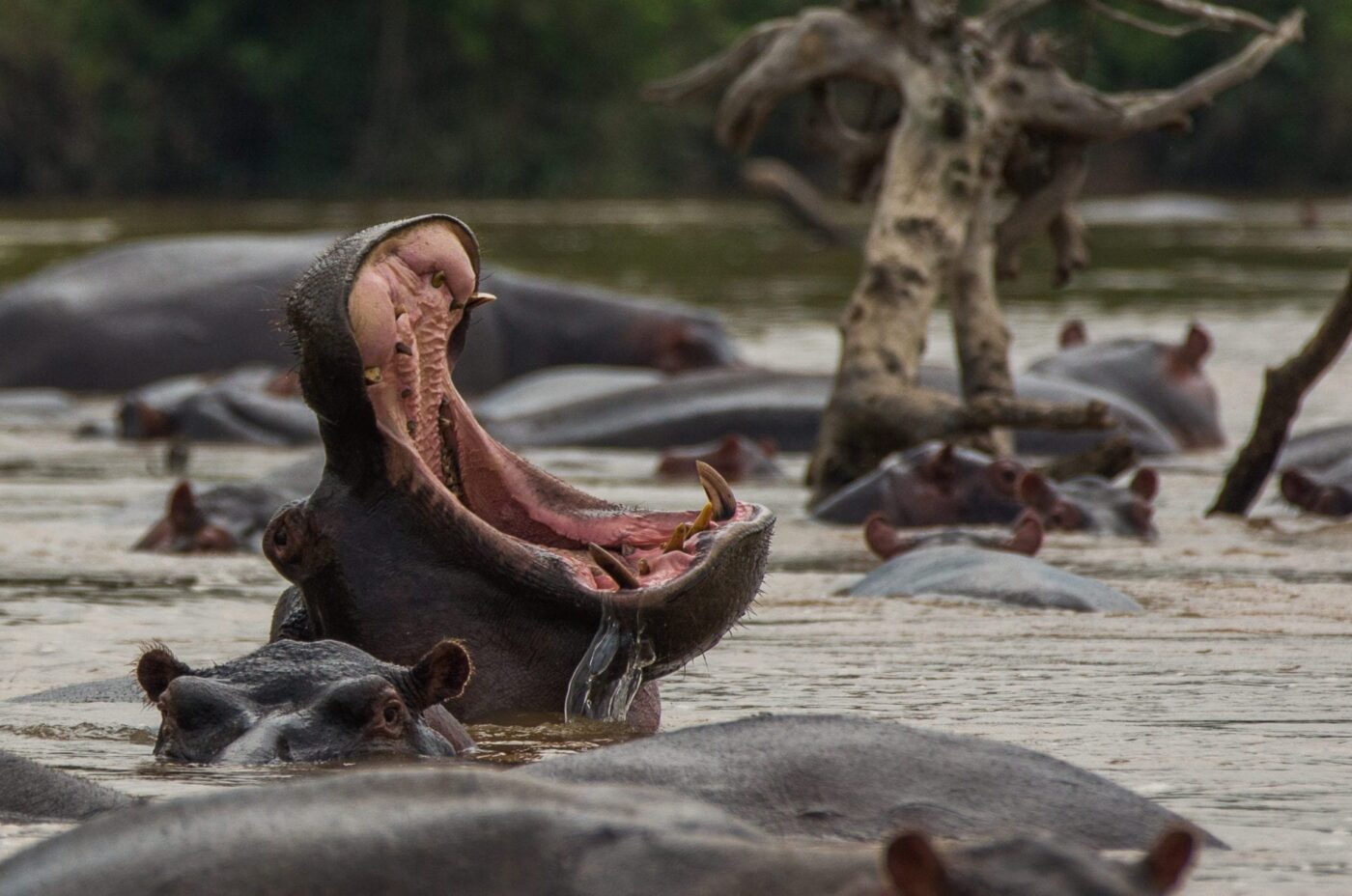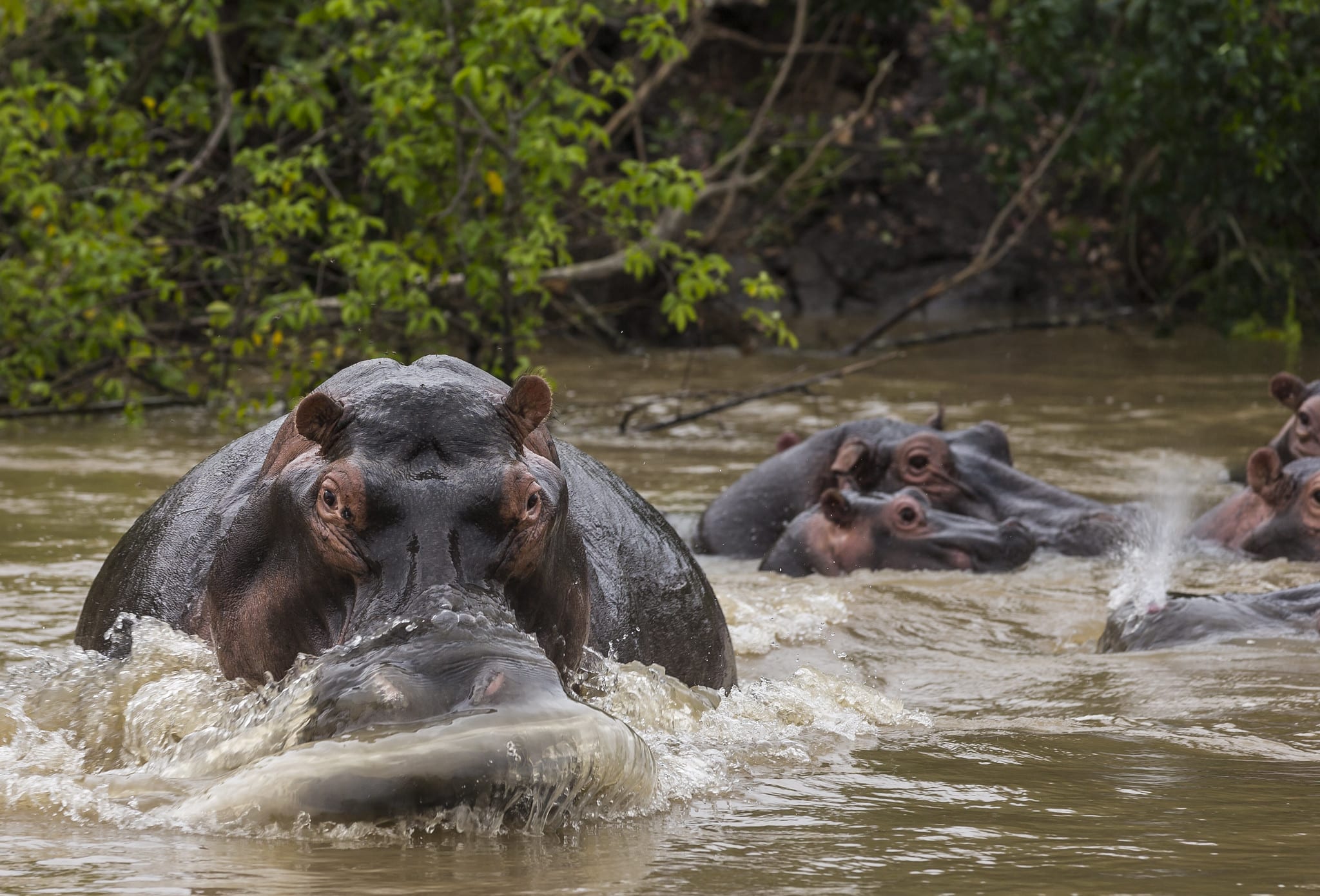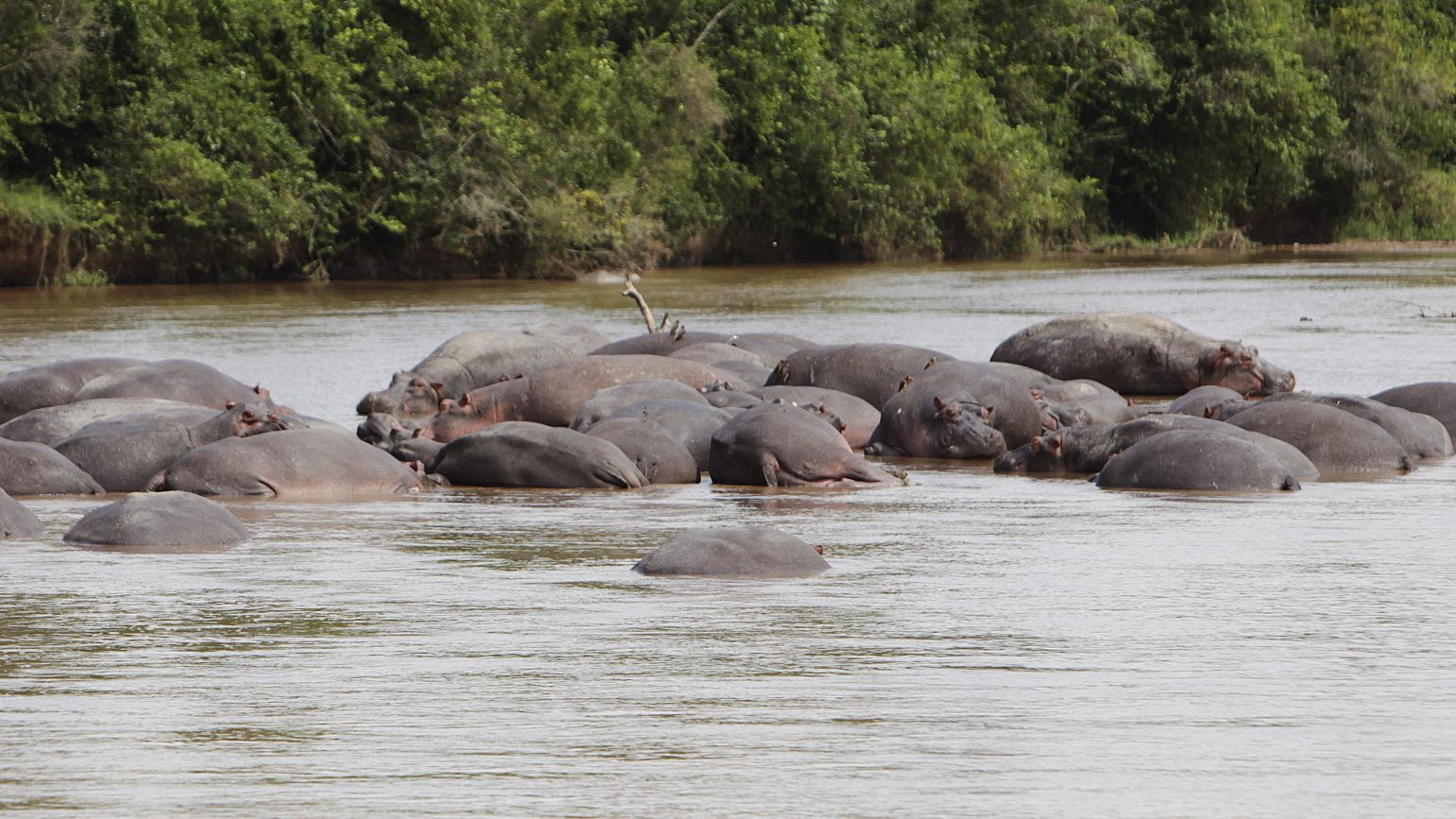
Support Virunga this Giving Season >

Virunga's hippo population
The semi-aquatic hippopotamus is the world’s third-largest land animal and is more closely related to whales and dolphins than other herbivorous land grazers. Despite their appearance, hippos are known to be unpredictable at times and are responsible for more human deaths in Africa than any other animal (except the mosquito). Their reputation does little to dissuade poaching for their ivory canines, which along with habitat loss, is a major contributing factor towards population decline.
Due to their formidable size, hippos have a profound influence on their environment, compacting sediment and altering the flow of swamps and rivers.
They also feed on land, opening up the landscape for short-grass grazing antelopes, and change the ecology of their aquatic environments by depositing their nutrient rich dung.
Once numerous across Africa, especially in Virunga National Park where they numbered around 29,000 as recently as 1974, hippopotami now mainly exist in eastern central and southern sub-Saharan Africa. They live predominantly in rivers, lakes, mangrove swamps and pools, with some solitary males making rapid waters their homes.
During the wet season, a pregnant female will self-isolate before giving birth to a 100 pound (45kg) calf. After a few weeks, she then rejoins her herd, normally led by a dominant male and containing up to thirty non-breeding males, other females and their young.
Thanks to their size, strength in numbers and temperament, hippos are rarely preyed upon.
Despite spending most of their lives in water, hippos cannot swim well and use their webbed feet for wading and supporting their body weight while on land. Here during the cool nights, they consume up to 80 pounds (36kg) of grass. They keep themselves free of parasites with the help of cleaner fish.
When on the shore, hippos secrete a red oily substance which acts as skin moisturizer and sunblock, which is also said to have antibiotic properties.
The teeth of the hippo are self sharpening, can grow up to 50cm long and never stop regenerating. Canines and incisors are used solely for intimidation and combat.
Hippos can weigh up to 4,400 pounds (2,000kg). The placement of the hippo’s eyes and nostrils, located on the top of its head, allows them to stay mostly submerged under water for nearly 16 hours a day. This helps the hippo to remain cool in the hot African sun.
In the 1970s Virunga recorded the largest number of hippos in the world, with 29,000 individuals in and around Lake Edward. Since then, instability in the region has led to increased poaching and a 95% decline in the size of the population.

Hippos are poached for their meat by armed groups and those in absolute poverty, and for the ivory found in their teeth.

Their proximity to armed groups around Lake Edward leaves the hippopotamus population even more vulnerable.

Since Rangers were able to regain control of the south-eastern shores of Lake Edward, the Park has witnessed a slow recovery of the overall population.

A terrestrial census organised in August 2019 assessed the Park’s population at around 1,500 individuals.
Q. Are hippos friendly to humans?
A. No, hippos are not friendly to humans. Despite their calm appearance, they are extremely territorial and can be very aggressive when they feel threatened. They are considered one of the most dangerous animals in Africa.
Q. Do hippos eat meat?
A. Hippos are herbivores and mainly eat grass. While there have been rare observations of them consuming carrion, this is not part of their normal diet, as their digestive system is adapted for plant material only.
Q. How strong is a hippo’s bite?
A. A hippo’s bite is one of the strongest in the animal kingdom, reaching around 1,800 psi (pounds per square inch) — strong enough to crush a crocodile or even flip a small boat.
Q. What do hippos eat at night?
A. Hippos spend their nights grazing on short grasses near rivers and lakes. They can travel several kilometers in search of food and may consume up to 40 kilograms of grass per night.
Q. Why are hippos so aggressive?
A. Hippos are primarily aggressive in defense of their territory and young. Males defend their section of the river from intruders, while females protect their calves fiercely. Their aggression is a natural behavior for survival.